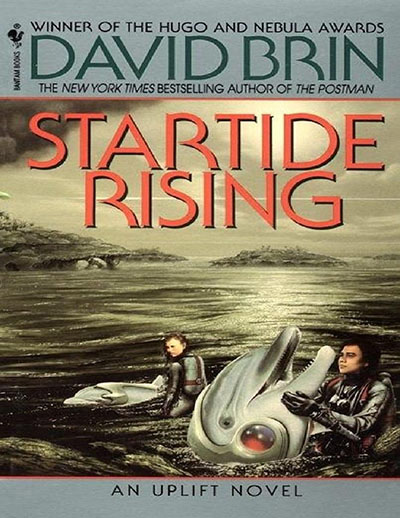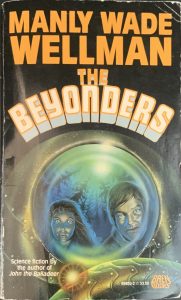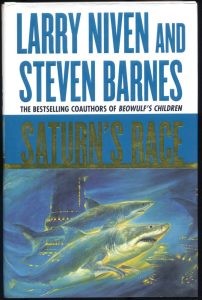
I read Red Flame Burning, by Ward Hawkins. I chose it because the cover art was wild. The story was wild as well, but also quite bad. It felt fake in a way that none of the literature we’ve been reading so far has. I’ll get into this later, though.
This book is about Harry Bork, a 65-year old alcoholic who has a doorway between dimensions opened up in his room when Gus Rassan, a lizard man – is putting up a cabinet in his own room in his own world and knocks a hole in both his wall and the fabric of reality. Gus’s surgeon friend cures Harry of his alcoholism and rehabilitates his ruined body. Harry then visits Gus’s world and finds that humans are used as cattle. The lizard people – called the Jassans – are very timid, and need Harry’s help to avert war. This is as far as I got before I stopped reading and skimmed the rest.
I don’t know exactly what style of SF this book is, but it seems to fall into a few catagories. Ward Hawkins has a pretty poor grasp of evolution, which also happens to be a central concept in this book. The manner in which Jassans and the humans of their planet – which they call “bassoes” have evolved is not particularly feasible, and is explained with a simple “who knows how these things work”. I guess it isn’t outside the realm of theoretical possibility, but having the only explanation be “I don’t know, evolution, I guess” brings this outside the realm of hard science fiction and into the realm of soft sci-fi. The only thing that occasionally pulled this novel out of the category of sociological science fiction this is that Harry is an engineer, and the mechanical descriptions of the Jassans’s technology are somewhat detailed. Despite this, the science was always secondary to the sociological elements of examining Jassan and Human society, which puts this book decidedly in the camp of soft science fiction.
As I said above, this book was not good. The writing was decidedly mediocre. The characters talked like they were from an old western serial, which made perfect sense after doing some research into Ward Hawkins, who was primarily an author of pulp westerns. Red Flame Burning and the rest of the books in the Harry Borg and Gus Rassan series are comedic sci-fi novels. This comedy does sometimes come through. However, it is often racist, sexist, or homophobic in concept, which certainly ruins it. I liked the character of Gus, who was endearing and who’s humor seemed to be largely un-bigoted in nature. However, he didn’t make up for the rest of the book.
I would not recommend Red Flame Burning, except as a not-too-horrible way to experience a pulp science fiction novel. The fact that it always stayed one step above being horribly bad (barring the bigotry, which was always just around the corner) and stayed in the realm of mediocre-to-bad makes it all the more skippable. However, if one is interested in pulp, this is a quick read and may be a good way to understand the genre.
Citation:
Hawkins, Ward. Red Flame Burning: A Novel. Ballantine Books, August, 1985.








